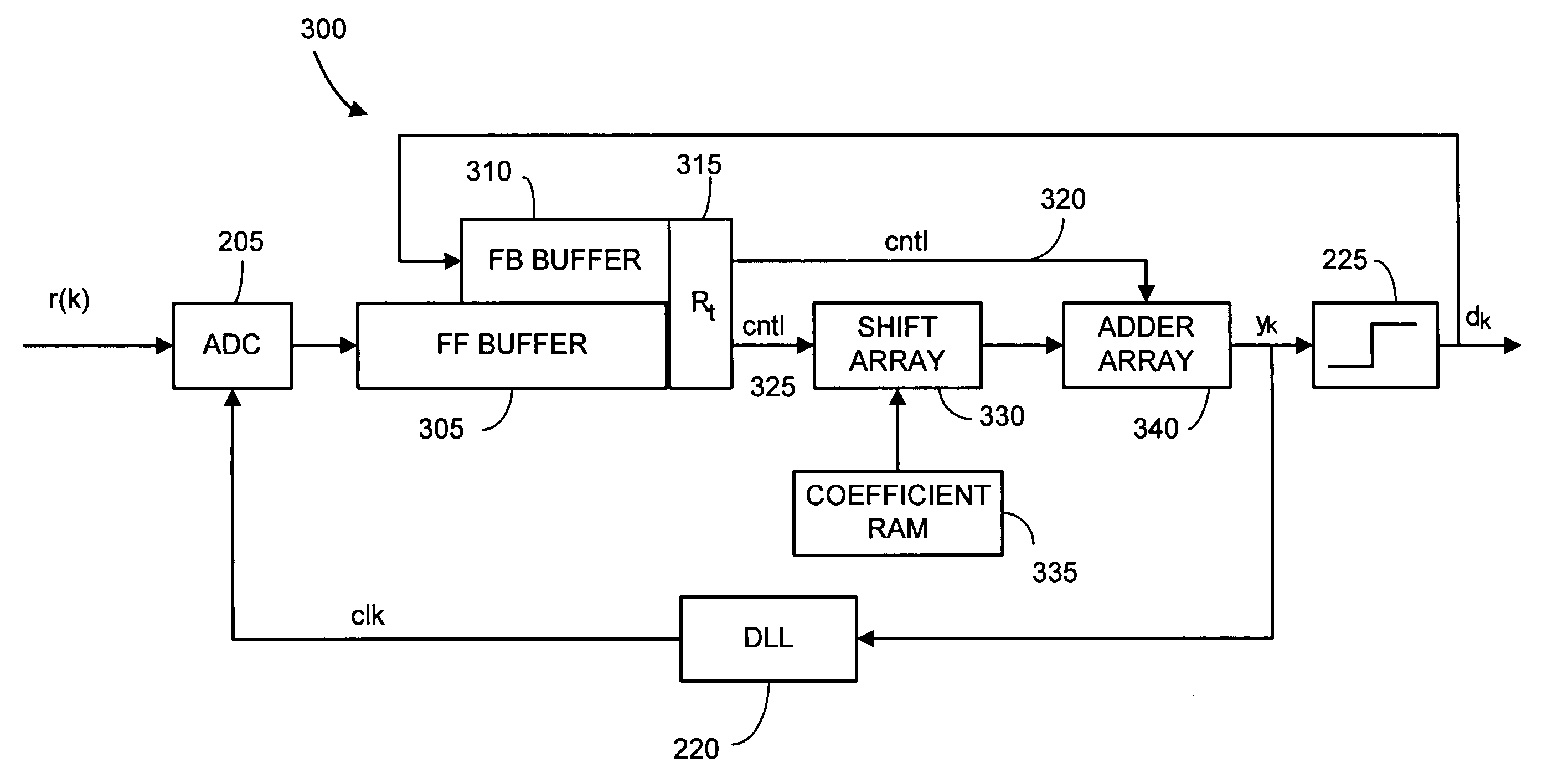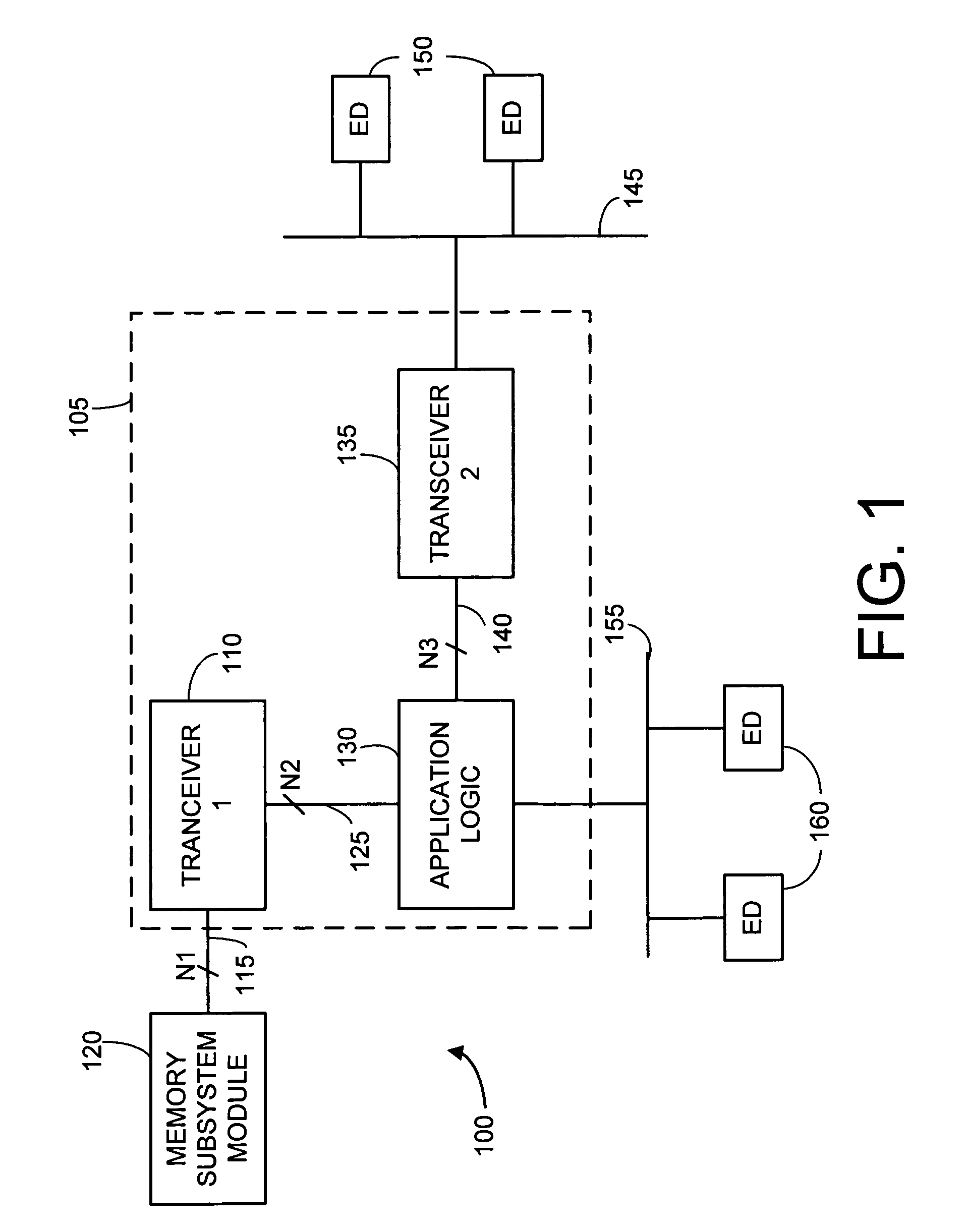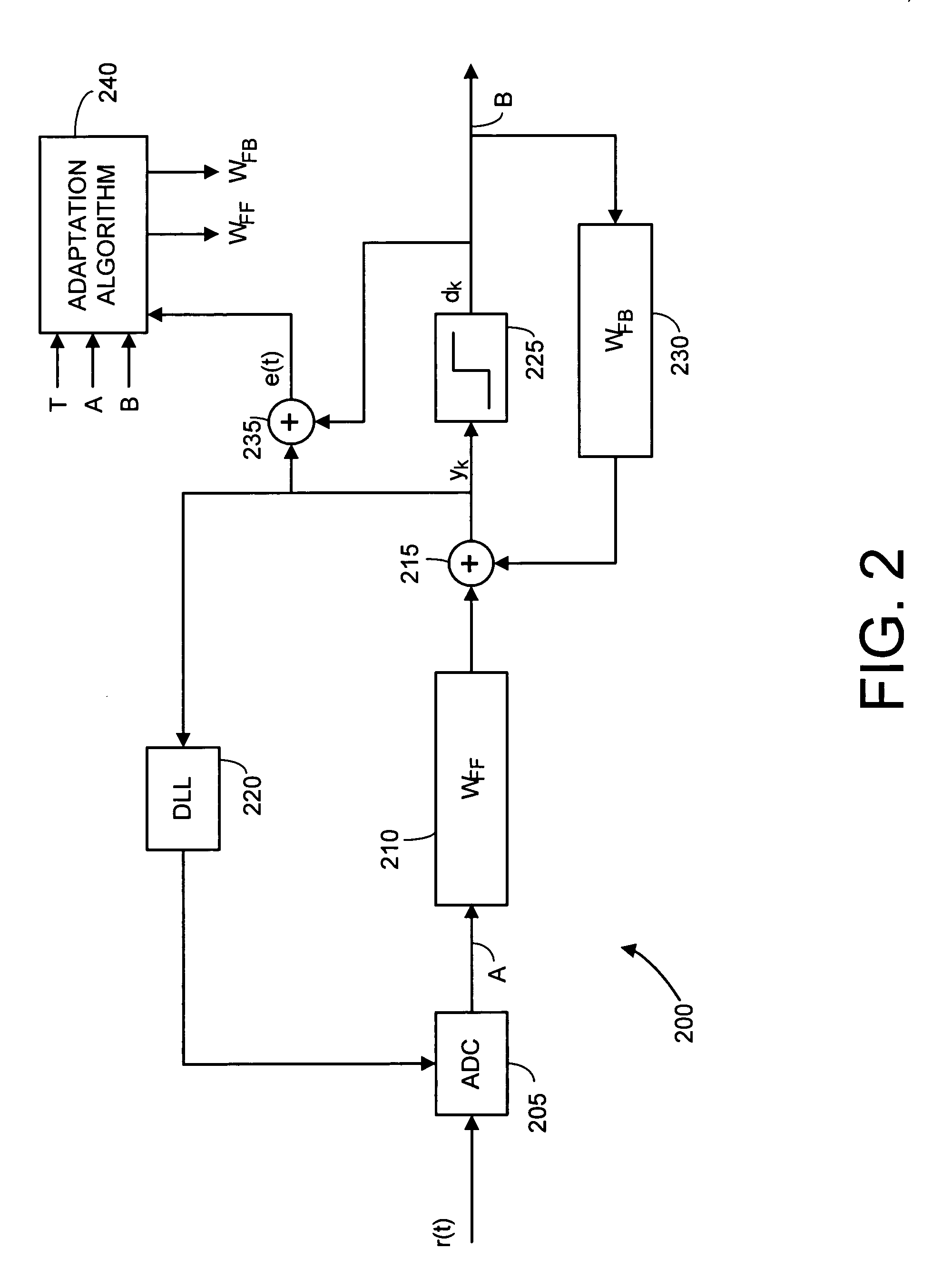High-speed adaptive interconnect architecture with nonlinear error functions
a nonlinear error, adaptive interconnect technology, applied in the direction of pulse manipulation, pulse technique, digital transmission, etc., can solve the problems of eye closing, inability to discern the transmitted signal level, and eventually the inter-chip communication speed is reduced, and achieves low cost, high speed, and low power equalizing the effect of the receiver structur
- Summary
- Abstract
- Description
- Claims
- Application Information
AI Technical Summary
Benefits of technology
Problems solved by technology
Method used
Image
Examples
Embodiment Construction
[0018]FIG. 1 is a block diagram illustrating an exemplary electronic system 100 making use of a bus line receiver structure in accordance with the present invention. A processing device 105 is illustrated that may be implemented with various combinations of one or more bus receiver modules (110, 135 and logic coupling to bus 155). These modules may be implemented on one or more single chip dies. In a preferred embodiment the processing device 105 is implemented as a microsystem on a single die. In most preferred embodiments, the bus receiver modules also include transmit (write) capabilities and are technically “transceivers modules.” As this application focuses mainly on the bus receiver aspect, these modules will be discussed as receivers, but at times may also be referred to as “transceivers.” It is to be understood that the bus interconnects usually include both read and write capabilities. In this application it is assumed that the bus receiver is responsible, at least in part,...
PUM
 Login to View More
Login to View More Abstract
Description
Claims
Application Information
 Login to View More
Login to View More - R&D
- Intellectual Property
- Life Sciences
- Materials
- Tech Scout
- Unparalleled Data Quality
- Higher Quality Content
- 60% Fewer Hallucinations
Browse by: Latest US Patents, China's latest patents, Technical Efficacy Thesaurus, Application Domain, Technology Topic, Popular Technical Reports.
© 2025 PatSnap. All rights reserved.Legal|Privacy policy|Modern Slavery Act Transparency Statement|Sitemap|About US| Contact US: help@patsnap.com



